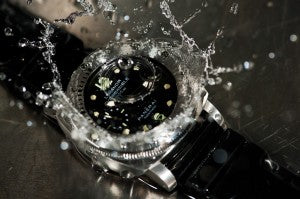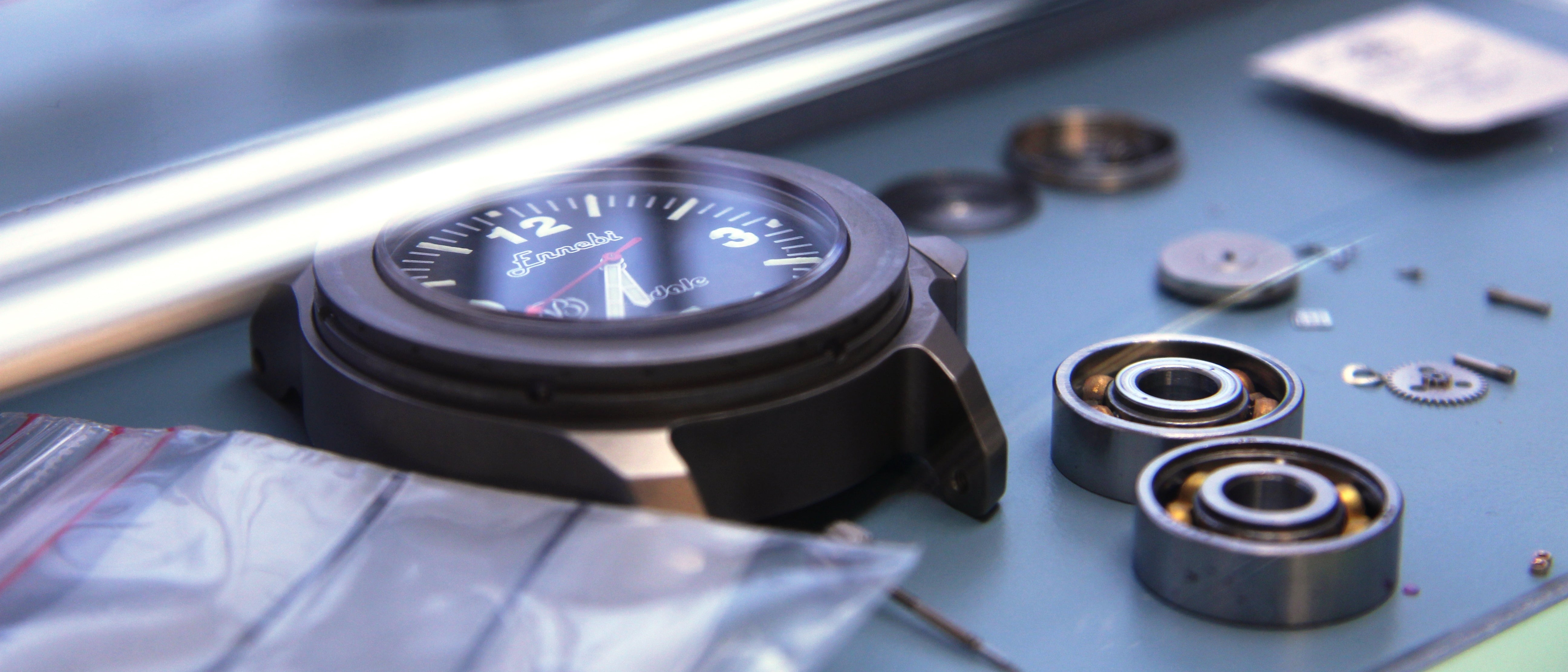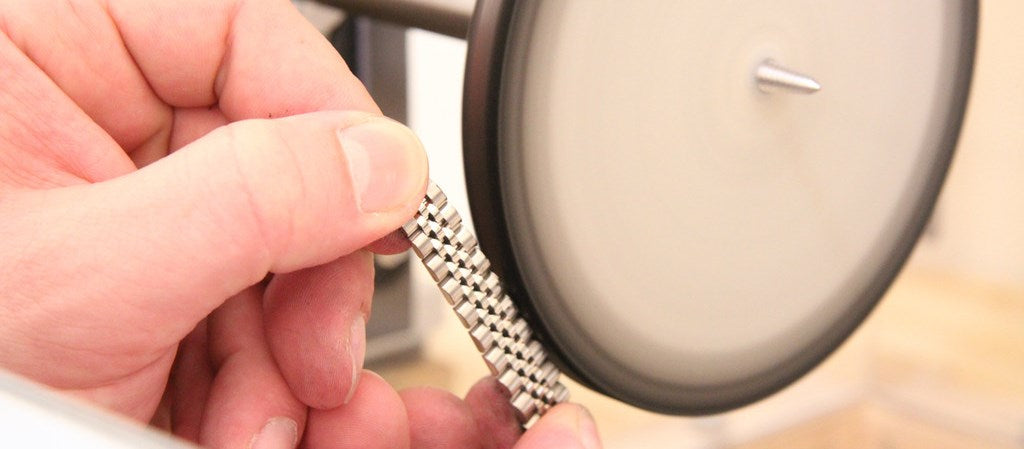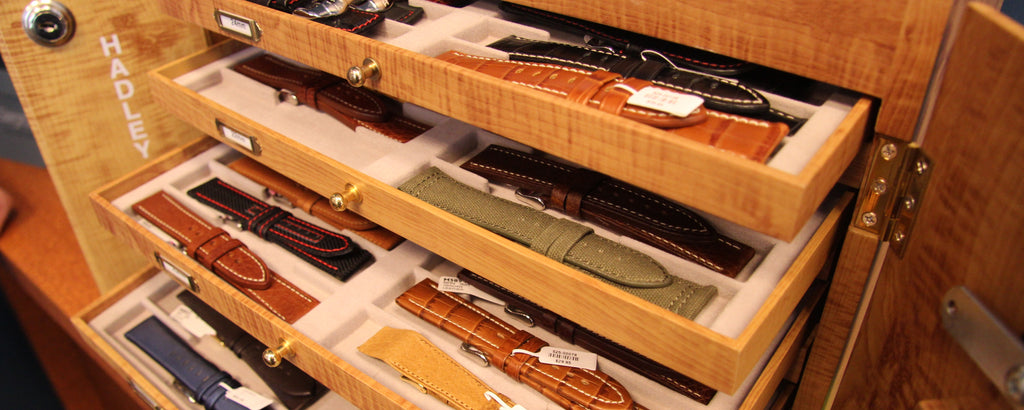Watch Spa 101
 When I was young my father spent every weekend washing and waxing his British racing green Triumph TR-7. Actually it was a red Volkswagon Rabbit, but keeping it pretty was the next best thing to owning the car he wanted. When your majority stake in that tech start-up finally pays off, TimeScapeUSA will be happy to curate monthly additions to your collection of fine timepieces. But until you can be with the watch you love, we advise: Honey, love the one you're with.
When I was young my father spent every weekend washing and waxing his British racing green Triumph TR-7. Actually it was a red Volkswagon Rabbit, but keeping it pretty was the next best thing to owning the car he wanted. When your majority stake in that tech start-up finally pays off, TimeScapeUSA will be happy to curate monthly additions to your collection of fine timepieces. But until you can be with the watch you love, we advise: Honey, love the one you're with.
When I was young my father spent every weekend washing and waxing his British racing green Triumph TR-7. Actually it was a red Volkswagon Rabbit, but keeping it pretty was the next best thing to owning the car he wanted. When your majority stake in that tech start-up finally pays off, TimeScapeUSA will be happy to curate monthly additions to your collection of fine timepieces. But until you can be with the watch you love, we advise: Honey, love the one you're with.
Cleaning
Occasionally cleaning your watch is the first, best thing you can do to improve its appearance and extend it's life. But don't be hasty – for the same reason you wouldn't hit your shih tzu with a power sprayer, you need to use appropriate measures with a treasured piece.
Most contemporary watches are adequately sealed against short-term immersion. As we've stated previously, a pressure rating on the case back is a good indication that your pieces is equipped with the necessary seals to survive cleaning with a tooth brush and running water. If in doubt, consult your manual or our entry on pressure testing.
For unmarked watches or vintage pieces, one can't be too careful. A cotton swab moistened with jewelry cleanser or alcohol is a good start, but make sure that you don't cause fluid to pool around the crown, crystal seam, or pushers
Metallic bracelets and rubber straps can almost always benefit from ultrasonic detergent cleaning, while natural leathers require more judicious treatment.
“Just shine it up!”
If only things were so simple. There are a few things to keep in mind anytime you undertake to have your case refinished, and one can't always assume the technician will have your best interests at heart. First and foremost, remember that polishing removes metal. And once it's gone, it is difficult or impossible to put back.
Plated Cases – If your watch has a base metal case plated to look like steel or gold, chances are the plating is very thin. Such cases can be lightly buffed, but will not survive major modifications to the finish. The rigors of machine polishing are even more harmful if the plating has already been penetrated by wear or damage.
Precious Metal – There's a reason that jewelry stores don't throw away their polishing machine filters: they're full of gold from client pieces. The higher your expectations that the watch “look like new,” the more metal the technician must remove. Soldering or laser-welding new metal to a case is costly, and even then it is difficult to re-establish complex planes and contours. With precious metal case polishing, the rule must be: less is more. Repeated polishing of a precious metal case is like throwing money in the street.
Steel – Provided wear is reasonable, contemporary steel cases provide the best opportunity for refinishing to “like new.” They are typically forged with ample extra thickness of material and can be polished a number of times without endangering major features.
Vintage Pieces – The refinishing of vintage watches presents a special challenge. Often times, the fragility of these case will not respond well to machine polishing at all. In comparison to modern cases, most vintage watches are not heavily built so case damage cannot be hidden, and even minor mistakes at the bench can have serious consequences
For many enthusiasts, part of the joy of owning a vintage piece is that it has a story to tell. The light wear and patina that naturally accumulate are features to be treasured rather than removed, so polishing is discouraged. With particularly rare vintage pieces, case refinishing should be avoided altogether as it can actively diminish the value of the watch.
Crystal
Is your watch crystal badly chipped or scratched? Compared to the risks inherent in case polishing, crystal replacement has few downsides. In addition to making it more attractive and easier to read, a new crystal can actively contribute to the safety of your watch.
Plastic – While not as resistant to damage or moisture, plastic crystals are a dream to maintain. They are inexpensive, widely available, easy to install, and can actually be shined with the proper compound.
Mineral Glass – The standard for moderately priced pieces, Mineral glass crystals are also relatively inexpensive to replace, provided your watch requires a standard size. In a pinch, custom crystals can be fabricated for a reasonable price.
Sapphire – The only option for high-end watches, sapphire crystals are the acme of durability and strength. They are fixed in place with water resistant gaskets, and often coated with chemicals to reduce glare. Once scratched, a sapphire crystal cannot be repaired, so expensive replacement is the only option.
Strap or Bracelet
When I kiss my wife after she gets her hair straightened, it's like having an affair with none of the downside. New harness for your watch can provide the same guilt-free frisson. This is probably the easiest way to “dress-up” your watch, and TimeScapeUSA is ready to serve with a large selection of straps in a variety of natural and synthetic materials.Bracelets can be more of an investment, owing to the possibility that your watch is “only” compatible with OEM equipment. Our suppliers have a number of products on offer that can be modified to fit contemporary case designs. Come down for a consultation, and we will be happy to show you what's possible.




